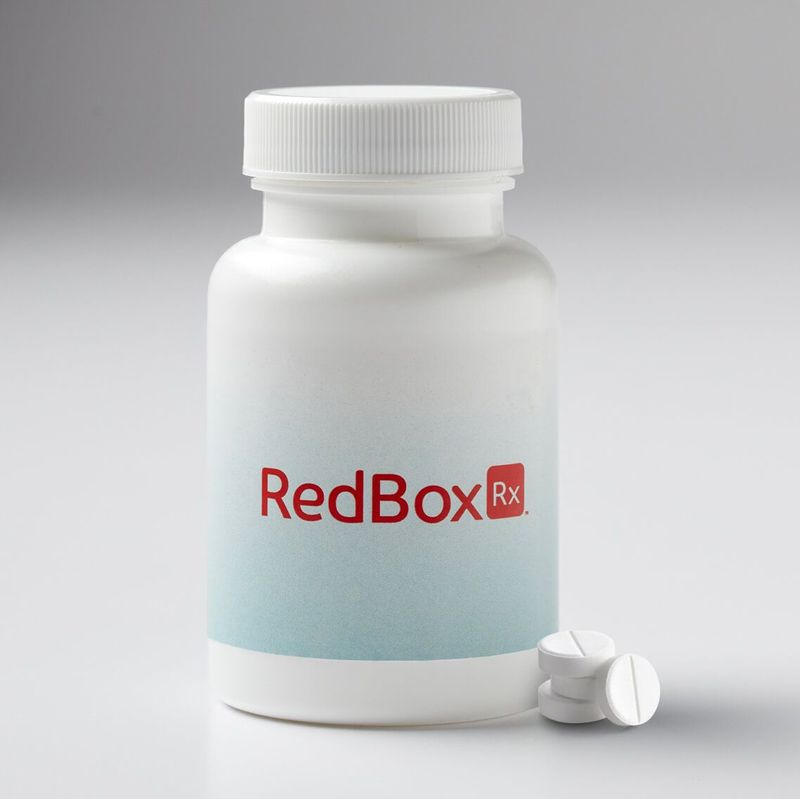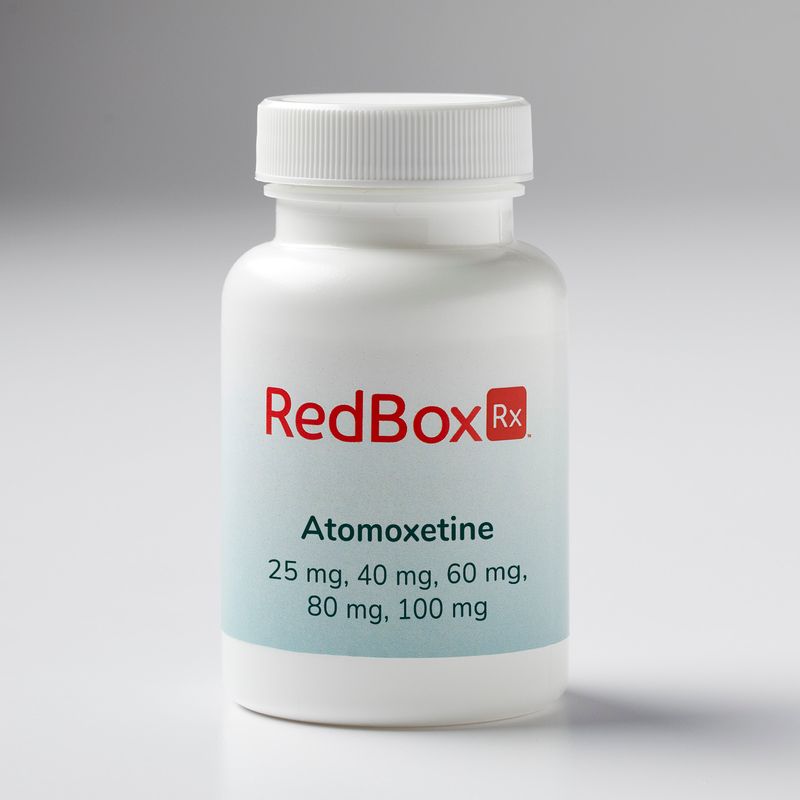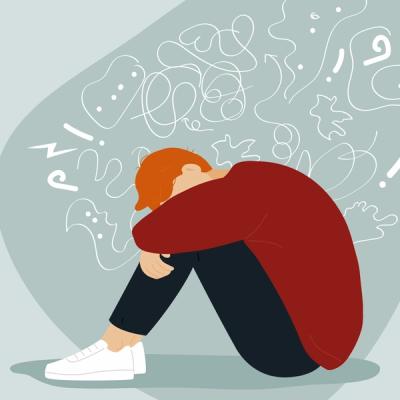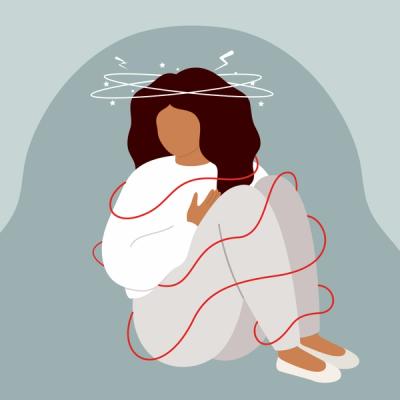Atomoxetine (Generic Strattera) FAQs
-
Atomoxetine is used as part of a total treatment program to increase the ability to pay attention and decrease impulsiveness and hyperactivity in adults with ADHD. Atomoxetine is in a class of medications called selective norepinephrine reuptake inhibitors. It works by increasing the levels of norepinephrine, a natural substance in the brain that is needed to control behavior.
-
Atomoxetine comes as a capsule to take by mouth. It is usually taken either once a day in the morning, or twice a day in the morning and late afternoon or early evening. Atomoxetine may be taken with or without food. Take atomoxetine at around the same time(s) every day. Follow the directions on your prescription label carefully, and ask your doctor or pharmacist to explain any part you do not understand. Take atomoxetine exactly as directed. Do not take more or less of it or take it more often than prescribed by your doctor.
Swallow atomoxetine capsules whole; do not open, chew, or crush them. If a capsule is accidentally broken or opened, wash away the loose powder with water right away. Try not to touch the powder and be especially careful not to get the powder in your eyes. If you do get powder in your eyes, rinse them with water right away and call your doctor.
Your doctor will probably start you on a low dose of atomoxetine and increase your dose after at least 3 days. Your doctor may increase your dose again after 2–4 weeks. You may notice improvement in your symptoms during the first week of your treatment, but it may take up to one month for you to feel the full benefit of atomoxetine.
Atomoxetine may help to control the symptoms of ADHD but will not cure the condition. Continue to take atomoxetine even if you feel well. Do not stop taking atomoxetine without talking to your doctor.
-
Atomoxetine is a norepinephrine reuptake inhibitor and works by increasing norepinephrine levels in the brain to manage ADHD symptoms.
-
ADHD symptoms may start to improve within one week, but it can take up to a full month to feel the full benefits of atomoxetine.
-
This medication may be prescribed for other uses; ask your doctor or pharmacist for more information.
-
Atomoxetine has a half-life of 5 hours.
-
Before taking atomoxetine,
tell your doctor and pharmacist if you are allergic to atomoxetine, any other medications, or any of the ingredients in atomoxetine capsules.
tell your doctor if you are taking monoamine oxidase (MAO) inhibitors, including isocarboxazid (Marplan), phenelzine (Nardil), selegiline (Eldepryl, Emsam, Zelapar), and tranylcypromine (Parnate), or if you have stopped taking them within the past 2 weeks. Your doctor will probably tell you not to take atomoxetine. If you stop taking atomoxetine, you should wait at least 2 weeks before you start taking an MAO inhibitor.
tell your doctor and pharmacist what other prescription and nonprescription medications, vitamins, nutritional supplements, and herbal products you are taking or plan to take. Be sure to mention any of the following: albuterol syrup or tablets (Proventil, Ventolin), amiodarone (Cordarone, Pacerone), bupropion (Wellbutrin), chlorpheniramine (antihistamine in cold medications),cimetidine (Tagamet), clomipramine (Anafranil), fluoxetine (Prozac, Sarafem), haloperidol (Haldol), metaproterenol syrup or tablets , medications for high blood pressure, methadone (Dolophine), metoclopramide (Reglan), nefazodone, paroxetine (Paxil), quinidine, ritonavir (Norvir), and sertraline (Zoloft). Your doctor may need to change the doses of your medications or monitor you carefully for side effects.
tell your doctor if you have or have ever had glaucoma (an eye disease that may cause vision loss), or pheochromocytoma (a tumor on a small gland near the kidneys). Your doctor will probably tell you not to take atomoxetine.
tell your doctor if anyone in your family has or has ever had an irregular heartbeat or has died suddenly. Tell your doctor if you have recently had a heart attack and if you have or have ever had a heart defect, high blood pressure, an irregular heartbeat, hardening of the arteries, heart or blood vessel disease, or other heart problems. Your doctor will examine you to see if your heart and blood vessels are healthy. Your doctor will probably tell you not to take atomoxetine if you have a heart condition or if there is a high risk that you may develop a heart condition.
tell your doctor if you or anyone in your family has or has ever had depression, bipolar disorder (manic depressive disorder; a condition that causes episodes of depression, episodes of frenzied, abnormal excitement and other abnormal moods), or has ever thought about or attempted suicide. Also tell your doctor if you have or have ever had seizures, or liver disease.
tell your doctor if you are pregnant, plan to become pregnant, or are breast-feeding. If you become pregnant while taking atomoxetine, call your doctor.
you should know that atomoxetine may make you drowsy. Do not drive a car or operate machinery until you know how this medication affects you.
you should know that atomoxetine may cause dizziness, lightheadedness, and fainting when you get up too quickly from a lying position. To avoid this problem, get out of bed slowly, resting your feet on the floor for a few minutes before standing up.
you should know that atomoxetine should be used as part of a total treatment program for ADHD, which may include counseling and special education. Make sure to follow all of your doctor's and/or therapist's instructions.
you should know that your blood pressure may increase during your treatment with atomoxetine. Your doctor will monitor your blood pressure during your treatment.
-
Unless your doctor tells you otherwise, continue your normal diet.
-
Take the missed dose as soon as you remember it. However, if it is almost time for the next dose, skip the missed dose and continue your regular dosing schedule. Do not take a double dose to make up for a missed one. Do not take more than the prescribed daily amount of atomoxetine in 24 hours.
-
There is no current evidence of withdrawal symptoms from atomoxetine. However, symptoms of ADHD may return upon stopping atomoxetine.
-
Atomoxetine may cause side effects. Tell your doctor if any of these symptoms are severe or do not go away:
heartburn
nausea
vomiting
loss of appetite
weight loss
constipation
stomach pain
gas
dry mouth
excessive tiredness
dizziness
headache
mood swings
decreased sex drive or ability
difficulty urinating
painful or irregular menstrual periods
muscle pain
sweating
hot flashes
unusual dreams
burning or tingling in the hands, arms, feet, or legs
Some side effects can be serious. If you experience any of the following symptoms, or those listed in the IMPORTANT WARNING or SPECIAL PRECAUTIONS section, call your doctor immediately:
fast or pounding heartbeat
chest pain
shortness of breath
slow or difficult speech
dizziness or faintness
weakness or numbness of an arm or leg
itchy skin
dark urine
yellowing of your skin or eyes
flu-like symptoms
pain in the upper right part of your stomach
swelling of the face, throat, tongue, lips, eyes, hands, feet, ankles, or lower legs
hoarseness
difficulty swallowing or breathing
hives
rash
abnormal thoughts
hallucinating (seeing things or hearing voices that do not exist)
erection that lasts for several hours or longer
seizures
Atomoxetine may cause other side effects. Call your doctor if you have any unusual problems while taking this medication.
If you experience a serious side effect, you or your doctor may send a report to the Food and Drug Administration's (FDA) MedWatch Adverse Event Reporting program online (http://www.fda.gov/Safety/MedWatch) or by phone (1-800-332-1088).
-
Keep this medication in the container it came in, tightly closed, and out of reach of children. Store it at room temperature and away from excess heat and moisture (not in the bathroom).
Unneeded medications should be disposed of in special ways to ensure that pets, children, and other people cannot consume them. However, you should not flush this medication down the toilet. Instead, the best way to dispose of your medication is through a medicine take-back program. Talk to your pharmacist or contact your local garbage/recycling department to learn about take-back programs in your community. See the FDA's Safe Disposal of Medicines website (http://goo.gl/c4Rm4p) for more information if you do not have access to a take-back program.
It is important to keep all medication out of sight and reach of children as many containers (such as weekly pill minders and those for eye drops, creams, patches, and inhalers) are not child-resistant and young children can open them easily. To protect young children from poisoning, always lock safety caps and immediately place the medication in a safe location - one that is up and away and out of their sight and reach. http://www.upandaway.org
-
In case of overdose, call the poison control helpline at 1-800-222-1222. Information is also available online at https://www.poisonhelp.org/help. If the victim has collapsed, had a seizure, has trouble breathing, or can't be awakened, immediately call emergency services at 911.
Symptoms of overdose may include the following:
sleepiness
agitation
an increase in activity or talking
abnormal behavior
stomach problems
wide pupils (black circles in the middle of the eyes)
fast heartbeat
dry mouth
-
Keep all appointments with your doctor and the laboratory. Your doctor may order certain lab tests to check your body's response to atomoxetine.
Do not let anyone else take your medication. Ask your pharmacist any questions you have about refilling your prescription.
It is important for you to keep a written list of all of the prescription and nonprescription (over-the-counter) medicines you are taking, as well as any products such as vitamins, minerals, or other dietary supplements. You should bring this list with you each time you visit a doctor or if you are admitted to a hospital. It is also important information to carry with you in case of emergencies
-
Strattera®
-
Atomoxetine is a generic version of Strattera®.
-
RedBox Rx prescribes 25 mg, 40 mg, 60 mg, 80 mg, and 100 mg dosages of atomoxetine. Our U.S. licensed medical professionals can help determine the right dosing of atomoxetine, if prescribed. Start an online consult for adult ADHD to discuss your options.
-
Atomoxetine is $25 to $30 per month at RedBox Rx, depending on if you purchase a one-month or three-month supply. No insurance required and no membership fees. We’re able to offer low prices because we purchase atomoxetine directly from manufacturers and ship from our pharmacy in Iowa.
Our online consultation for adult ADHD costs only $35.
-
Atomoxetine requires a prescription. Start an online consult for adult ADHD with a U.S. licensed medical professional at RedBox Rx to see if atomoxetine is right for you.
-
Studies have shown that children and teenagers with attention-deficit hyperactivity disorder (ADHD; more difficulty focusing, controlling actions, and remaining still or quiet than other people who are the same age) who take atomoxetine are more likely to think about killing themselves than children and teenagers with ADHD who do not take atomoxetine.
While your child is taking atomoxetine, you should watch his or her behavior very carefully, especially at the beginning of treatment and any time his or her dose is increased or decreased. Your child may develop serious symptoms very suddenly, so it is important to pay attention to his or her behavior every day. Ask other people who spend a lot of time with your child, such as brothers, sisters, and teachers to tell you if they notice changes in your child's behavior. Call your child's doctor right away if your child experiences any of these symptoms: acting more subdued or withdrawn than usual; feeling helpless, hopeless, or worthless; new or worsening depression; thinking or talking about harming or killing him- or herself or planning or trying to do so; extreme worry; agitation; panic attacks; difficulty falling asleep or staying asleep; irritability; aggressive or violent behavior; acting without thinking; extreme increase in activity or talking; frenzied, abnormal excitement; or any other sudden or unusual changes in behavior.
Your child's doctor will want to see your child often while he or she is taking atomoxetine, especially at the beginning of his or her treatment. Your child's doctor may also want to speak with you or your child by telephone from time to time. Be sure that your child keeps all appointments for office visits or telephone conversations with his or her doctor.
Your doctor or pharmacist will give you the manufacturer's patient information sheet (Medication Guide) when you begin treatment with atomoxetine and each time you refill your prescription. Read the information carefully and ask your doctor or pharmacist if you have any questions. You can also visit the Food and Drug Administration (FDA) website (http://www.fda.gov/Drugs) or the manufacturer's website to obtain the Medication Guide.
Talk to your doctor about the risks of giving atomoxetine to your child, of using other treatments for your child's condition, and of not treating your child's condition.
-
We offer prescription medication options for ADHD including:

Affordable adult ADHD treatment online.
Your mental health is important. The symptoms of adult ADHD, like inability to focus, hyperactivity, and impulsivity, can make it difficult to function at work and in social settings. RedBox Rx is here to help. We provide ongoing mental health support and prescription medication on your schedule.
- No membership or subscription fees.
- Low-cost telehealth consult with a licensed medical provider.
- Medications for $25 per month (with purchase of 3-month supply)
- Confidential, private and secure.
- Free standard shipping or expedited/overnight available.
Sorry, we’re closed for today. Our U.S. licensed medical providers are available daily 7 a.m. to 9 p.m. CST via live video visit. We look forward to serving you soon. Email us anytime at [email protected].
How RedBox Rx Works

Get atomoxetine prescribed online.
Take a 5-minute assessment, then schedule a 20-minute video consultation with one of our experienced, licensed medical providers to determine whether atomoxetine is right for you.
Sorry, we’re closed for today. Our U.S. licensed medical providers are available daily 7 a.m. to 9 p.m. CST via live video visit. We look forward to serving you soon. Email us anytime at [email protected].




